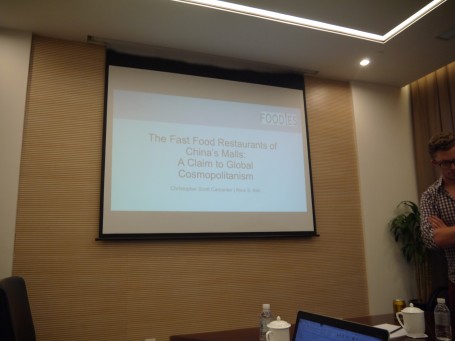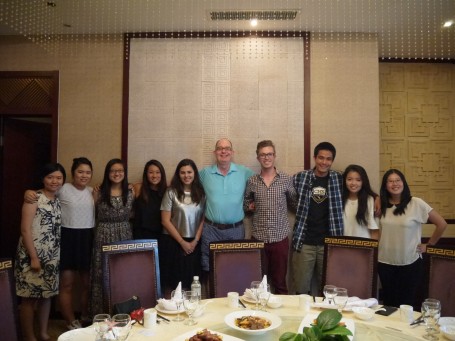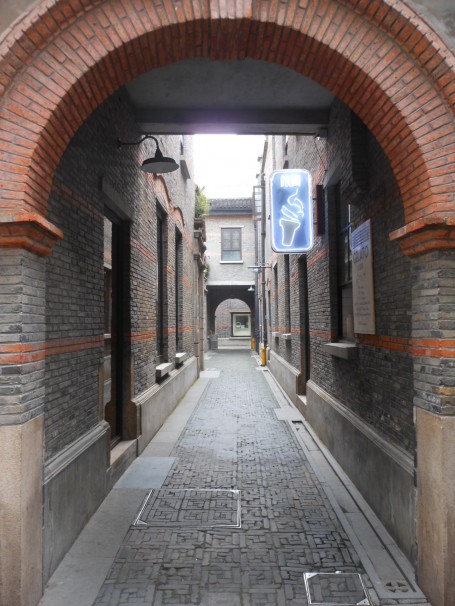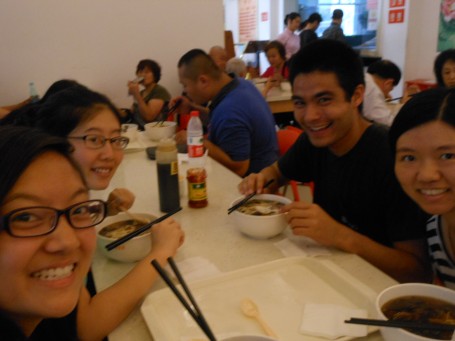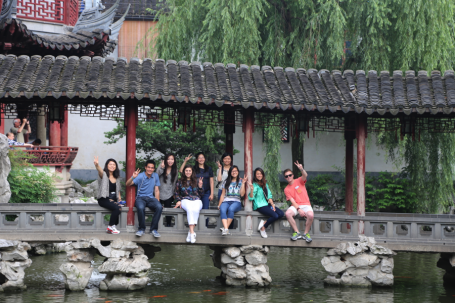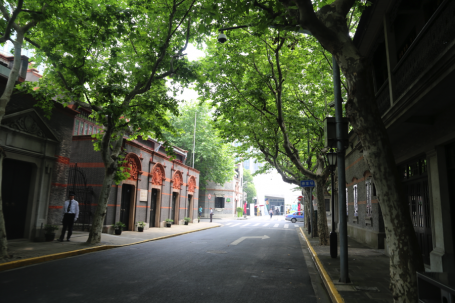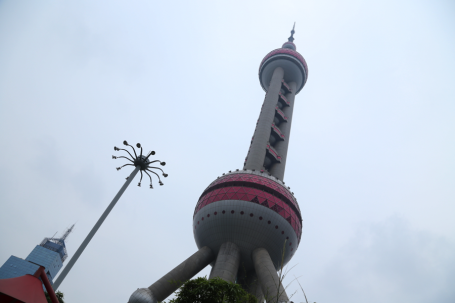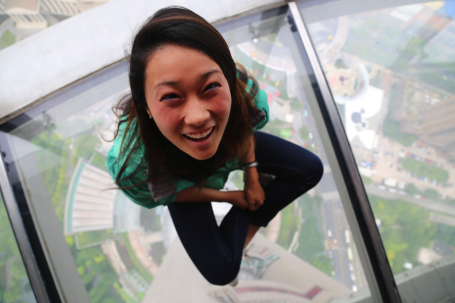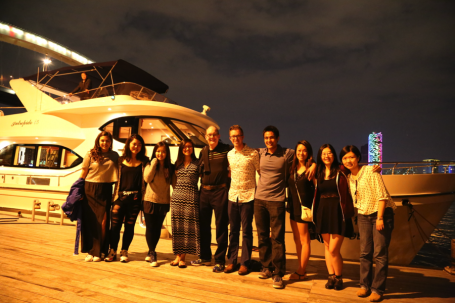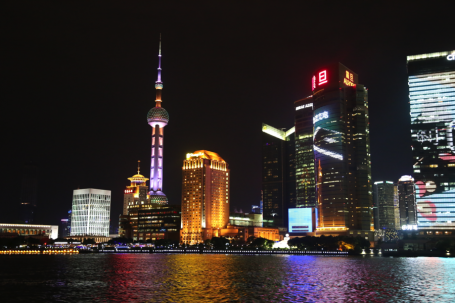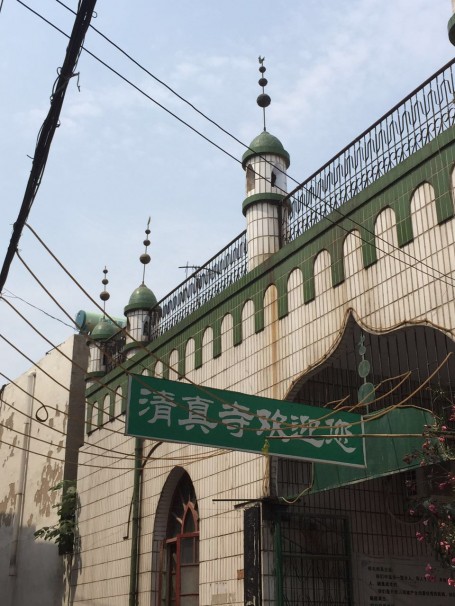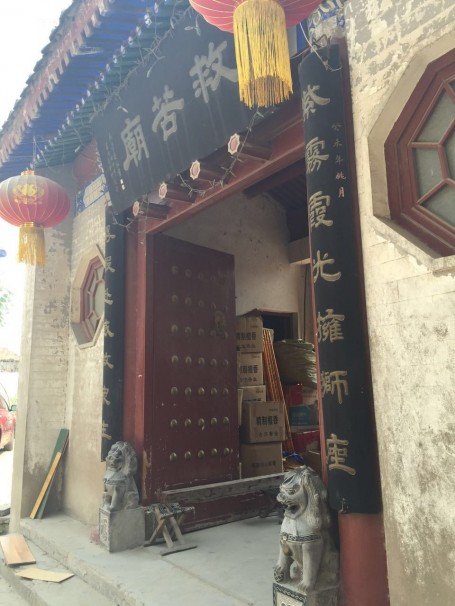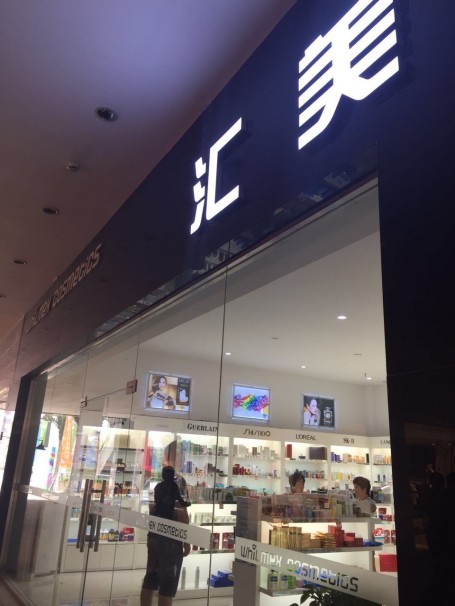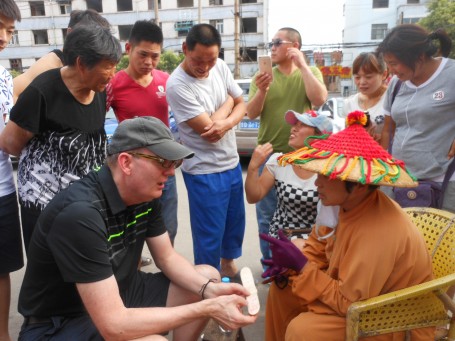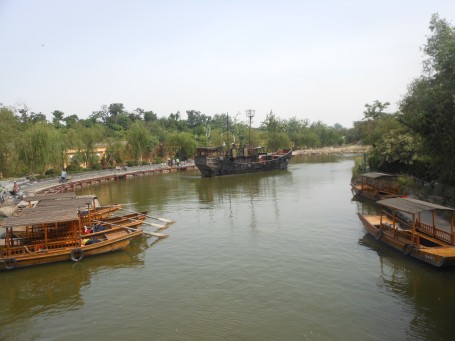By: Yunwen Gao
Now that all the Global East Asia (GEA) scholars are flying over the Pacific Ocean back to LA, when I am organizing the photos I took along the trip I still can’t believe our summer program has come to an end. As Professor Sheehan’s metaphor goes… “coming to China is like going through a worm hole, time is both elongated and shortened.” It feels like our GEA family has been living together for more than a year, and yet we have only been together for a month. I can’t describe how immensely this summer course has reshaped many of our assumptions about Chinese consumerism and globalization, for both the scholars and myself as well. As someone born and brought up in China, this trip to Beijing, Kaifeng, and Shanghai is a process of rediscovering China through a fresh lens.
The final day consisted of the final project delivery and farewell banquet. Despite the last minute rush, as any last day of USC courses would have, our amazing scholars delivered their final projects at a high level of professionalism and insightfulness. The Foodies (Christopher Carpenter and Alice Kim) examined fast food restaurants and food courts in shopping malls in Beijing, Shanghai, and Kaifeng with our course tools, and compared the fast food industries in first tier cities versus a third tier city like Kaifeng.
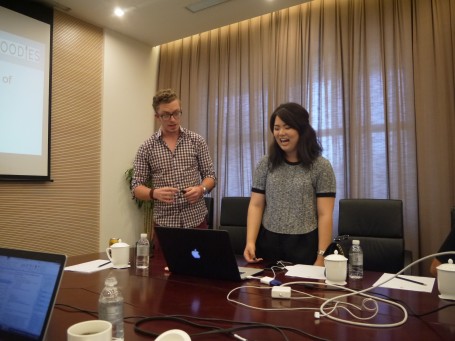
The Foodies Take on China: Christopher Carpenter (left) and Alice Kim (right) presenting their final project
The Skins (Phoebe Yin, Megan Lee, and Ashley Szydel) focused on the cosmetics industry, in particular, face masks produced internationally and domestically, and formulated their observation of the three prevailing models of marketing strategy, the luxury, mainstream, and niche models supported by extensive research and interviews.

The Face of the Chinese Cosmetics Market: Megan Lee (left), Ashley Szydel (middle), and Phoebe Yin (right) presenting their final project
The Arhats (Jonathan Peppin, Psalm Chang, and Michelle Ngan) took the issue of the commodification of religion in China and enriched the dialogue of globalization greatly. Their visits to jewelry stores, Buddhist and Daoist temples, restaurants, etc., provided us with a new picture of how religion has been commodified to convey the sense of piety, pragmatism, and playfulness. With the help of Professor Sheehan, all three teams successfully elevated their observations and analysis of Chinese consumerism and globalization to a whole new level.
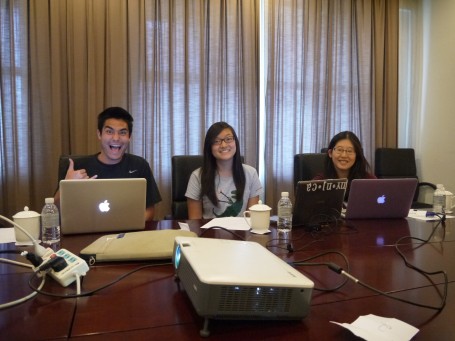
Commodification of Religion in Contemporary China: Jonathan Peppin (left), Psalm Chang (middle), and Michelle Ngan (right) presenting their final project
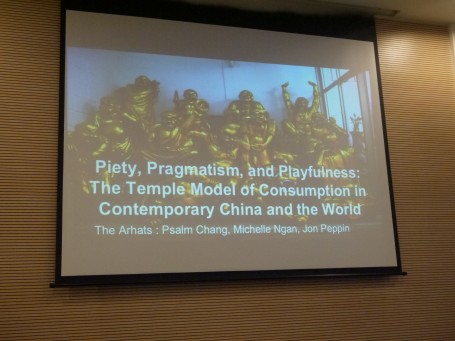
Piety, Pragmatism, and Playfulness: The Temple Model of Consumption in Contemporary China and the World
As we were waiting to be checked in at the Pudong airport, some of us started analyzing the advertisements around us. Looking at each other, we realized that walking out of this class, none of us could view advertisements or commercials as we used to do without examining what’s behind them. As the TA of this class, I feel proud of everyone in this program just as Professor Sheehan does and look forward to seeing each of them succeed in the future.

